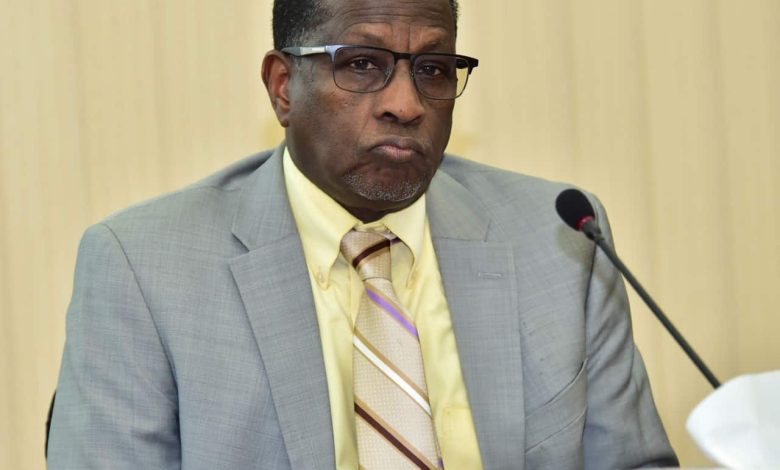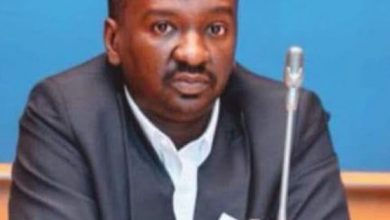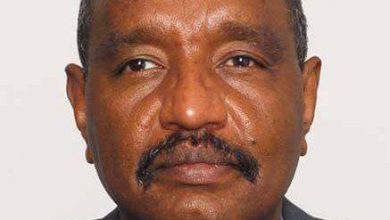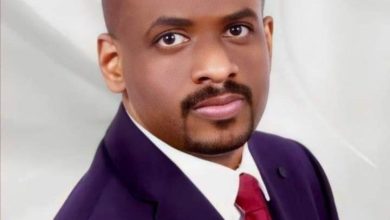The Big Losing Deal (6-7) From the Lawyers’ Draft to the Framework Agreement

Al-Tijani Abdel Qader Hamid
July 26, 2024
The “Quartet” did not hesitate to continue its efforts to implement the “big deal”. Less than three months after the draft of the Lawyers’ Constitution, a new project emerged entitled the Framework Agreement (December 2022).
This time, it mobilized larger crowds of foreign experts, and was accompanied by a remarkable media hype. One might wonder, is there a difference between the Lawyers’ Draft, which was ignored, and the new Framework Agreement? The main difference is that this time, the owners of the Framework Agreement have completely overthrown the Sovereignty Council, and granted supreme authority in the country – without ambiguity – to what has become known as the “revolutionary forces that signed the declaration” – that is, some elements of the Forces of Freedom and Change (FFC).
They are the ones who will control the power structures at their four levels; The Transitional Legislative Council is formed, the civilian sovereign level is chosen (who will be the supreme commander of the regular forces – i.e. equality between the armed forces and the Rapid Support Forces RSF and the prime minister (who will head the Security and Defense Council) is chosen.
As for Lt. Gen. Hemeti, the document has guaranteed him a very strange constitutional status. He and his forces are not subject to the leadership of the Commander-in-Chief of the Armed Forces SAF , nor is he subject to the Prime Minister.
All that is there is that he formally reports to a civilian president of the state, but this president has only symbolic ceremonial duties.
As for the Rapid Support Forces RSF ,they have been guaranteed an independent status parallel to the armed forces SAF (to be integrated into the armed forces later (after ten years) after they are purged of elements of the former regime and their combat doctrine is changed).
However, anyone who examines the two documents (the lawyers and the framework) will notice that there is a fixed line that has not changed in them, which is: avoiding any direct talk about the crime of “dispersing the sit-in”, or a clear commitment to identifying those criminally responsible for it.
All there is is a vague phrase about “launching a comprehensive process that achieves transitional justice that exposes crimes (since 1989), holds perpetrators accountable, and provides justice to the families of the victims.” The investigation committee, which was formed two years ago and has in its possession photographs and evidence that the former prime minister and members of the “Quartet” have seen, is not mentioned – exactly as agreed upon in the deal. In addition to this – and even more so – General Hemeti is no longer – according to this agreement – subordinate to the Supreme Command of the Armed Forces SAF ,nor a “deputy” to anyone, but has become the expected “prince”, who is privy to all state secrets, and at whose disposal are forces exceeding one hundred thousand, equipped with the latest machinery – the prince that Group of Four adopts and on whom hopes are pinned. Therefore, it is not surprising – for the second time – that Lt.Gen. Hemeti was the first to accept the agreement, as he announced (February 4, 2023) his full commitment to it, stressing that he would do his utmost to expedite its implementation.
(1) Then he said – in a direct threat to the leaders opposing him in the armed forces: “Go with us in this framework agreement, or we do not want this country to be divided and torn apart, and problems to occur in it.” (2) Before the ink with which the agreement was written had dried, Lt. Gen. Hemeti went to the Emirates on an unannounced visit (February 24, 2023), and he was received – as reported in the newspapers – by Sheikh Mansour bin Zayed, who affirmed to him the UAE’s support for the framework agreement (3). It was not surprising that the Forces of Freedom and Change FFC signed the agreement with all ten fingers, as they represent the third side in the grand deal.
What is surprising is that Lt. Gen. Burhan signed a document in which the armed forces he heads are removed, and the Rapid Support Forces RSF are established on their ruins. So why did Burhan agree to sign the framework agreement?
There is no doubt that Lt. Gen. Burhan was aware of the details and objectives of the agreement, and he was aware that its main purpose was to put the military institution (and its commander-in-chief) on the sidelines, to transform the Rapid Support Forces RSF into an alternative and independent military institution, and to promote Lt.Gen.Hemeti to the position of the new commander-in-chief for the next ten years. So why did Lt Gen. Burhan sign that agreement? There is of course no single definitive answer, as Lt. Gen.Burhan sometimes takes contradictory positions – like Lt. Gen.Hemeti – and makes statements and then retracts them.
However, what we believe is that pressures – and perhaps threats – were coming from below him (from within the military), from his right (from Lt. Gen. Hemeti – his arch-rival), and from above him (from the regional and international outside) (4). To get out of this existential dilemma, perhaps Lt.Gen. Burhan saw fit to follow this scenario: to sign the general framework of the agreement considering that it represents general principles, thereby alleviating the pressure of regional and international powers, and perhaps gaining some of their satisfaction, then transferring the “controversial issues” (most notably the new status of the Rapid Support Forces RSF ) to the representatives of the armed forces in the military and security reform workshop. If the representatives of the armed forces agree to this status, their approval will be considered an endorsement of his previous signing.
However, if they do not agree – and this is not unlikely – then he will be absolved from the agreement considering that the military establishment does not agree to it, and he is determined in any case not to hand over power to an unelected political party (5). The strange thing is that events proceeded exactly according to this scenario, which means that Lieutenant General Burhan’s ability to use political tactics and maneuver is no less than that of his fellow actors in the Sudanese political arena.
However, the advocates of the framework agreement and the conference organizers miscalculated when they thought that signing the general principles of the agreement would pave the way for signing the technical and procedural details that were disputed, and they were then transferred to what was known as the workshops. Among those controversial issues (and even the most important) was the issue of integrating the Rapid Support Forces RSF k into the National Army forces, so it was referred to the military and security reform workshop and the date was set for March 26-29, 2023.
The dispute centered on the time period that would precede the integration process, as the Rapid Support Forces RSF insisted on remaining an independent army parallel to the armed forces for ten years (isn’t that really suspicious?).
As for the armed forces, they saw that the period should not exceed two years. As a result of this dispute, the workshop failed to produce agreed-upon recommendations, and representatives of the armed forces withdrew from it, thus collapsing one of the pillars on which the framework agreement was built.
On the external front, the Quartet representatives were not unaware of the discussions taking place within the military establishment, nor did they imagine that they were so unaware that they would easily sign a document that would end their existence. Accordingly, they intensified their meetings with Lt. Gen.Hemeti to ensure his readiness to activate Plan B; that is, his readiness to implement the provisions of the framework agreement by force of arms if negotiations with the army leaders did not succeed. In this context, the repeated visits that Lt. Gen. Hemeti continued to make to the UAE throughout the weeks in which the draft framework agreement was proposed can be explained. It is known that on February 24, he visited the UAE (which was not officially announced), and held talks in Abu Dhabi with the UAE Deputy Prime Minister Mansour bin Zayed, (6) where the latter confirmed the UAE’s support for the framework agreement. (7) Then, on March 4, 2023, he announced that he had returned to Khartoum after a visit that lasted more than a week to the UAE. The visit came amid speculation of confrontations that might develop into military confrontations between the Rapid Support Forces RSF and the SAF – against the backdrop of sharp differences and media squabbling between their leaders.
The period from March 2023 to mid-April 2023 did not pass until Lt. Gen.Hemeti completed his scheduled series of visits to the Emirates, finished his consultations with the Quartet, and prepared in the best possible way to implement Plan (B), which does not differ in essence from the usual military coup plans: to move his heavy military units from North Darfur to Khartoum to establish control over all strategic sites in the triangular capital, to move a number of his forces to seize Marawi Airport, to move some of his military forces to the General Command Headquarters of the SAF (with the resulting killing or arrest of the Commander-in-Chief), and to move some of his forces to the Radio and TV Headquarters to announce the coup statement and the form of the new government (8). It is noted that most of these steps do not differ from the pattern of familiar coup steps that do not need explanation. However, what needs explanation is the movement of the Rapid Support Forces RSF to Marawi Military Airport, 350 km north of Khartoum. So why this step, and does this airport have any special importance?
Available information indicates that this airport is considered one of the largest airports in Africa, with an area of 18 km, and was designed for the take-off and landing of large aircraft, as it has a 4 km long runway that can receive 10 aircraft at once, and there is an air base that supports and replaces other military bases in Sudan, as well as the 19th Division forces responsible for protecting strategic facilities. (9) Because this information was not absent from Lt. Gen. Hemeti, he estimated that if he was able to seize this airport, he would be able (first) to put the Sudanese Air Force out of service early, and (second) to receive military air supplies from the state sponsoring the coup without the need for Ugandan or Chadian airports, and (third) to move his forces, equipment and supplies at the required speed to all areas of Sudan. Based on these estimates, Lt.Gen.Hemeti did not hesitate to move his forces and equipment to Merowe – before April 15 and without permission from the armed forces or notifying them (10). These forces did not hesitate to deploy around the airport, then storm it and arrest a number of Egyptian forces (who were conducting military training under a protocol with the Sudanese army SAF ).
This force published video clips of its soldiers inside the Merowe Air Base, with a picture of its commander reciting the victory speech (11). It was natural for the armed forces to surround the Rapid Support Forces RSF and order them to leave the site.
The Rapid Support Forces RSF refused to withdraw, and a clash broke out. After fierce battles, the armed forces were able to regain control of Merowe Airport.
Thus, you notice that the first shot in the war was not fired in Khartoum, but rather in Merowe. You also notice that the war did not begin on April 15, but rather began days before that. (12)
When we return to April 15 in Khartoum, we find that the coup steps did not succeed as expected – despite all the capabilities and preparations. Hemeti’s forces were unable to kill or arrest the commander-in-chief of the army, and Lt. Gen. Hemeti was unable to appear on television to broadcast the statement of the new “democratic” era.
On the other hand, it became clear that the armed forces had not yet surrendered, and since then (April 15, 2023) the coup has turned into a protracted war between the armed forces and the Rapid Support Forces RSF , and Lt. Gen. Hemeti has disappeared from the scene of military and political operations, turning into something resembling a legend in which reality is mixed with artificial intelligence.
(And yet some supporters of the framework agreement argue that Lt. Gen. Hemeti did not start the war, nor did the armed forces start it, but rather it was started by a “third party from the supporters of the former regime” who rejected the framework agreement. Although there is no objective evidence to rely on in this regard, let us assume the validity of this statement, sound logic requires us to ask: Was this third party from the supporters of the old regime working in coordination with the SAF or working alone?
If we say that it was working with the knowledge of the army and in coordination with it (due to their unity in rejecting the framework agreement), then there is no escape from attributing the first shot to both of them together – whether in Merowe or in Khartoum. But if we say that the third party was working alone, and that it fired its first shot without the knowledge of the army SAF or coordination with it (as the proponents of this opinion say), then this third party would have in this case provided a fatal “stab” in the back to the army with which it is allied, and at the same time provided a great “service” to the Rapid Support Forces RSF as it gave them the opportunity to launch a surprise strike at the army at a time when it was not ready, as It gave it the opportunity to appear as the victim of the attack.
Which means that this “third force” – if it exists – is either a clumsy force working against its interests and those of its allies, or one of the sleeper cells working in coordination with the Rapid Support Forces RSF and not against them.
This is not far-fetched if we know that the Rapid Support Forces RSF had elements within the military and security institutions, hiding them at times and summoning them at other times – according to what the situation requires.
We continue.



